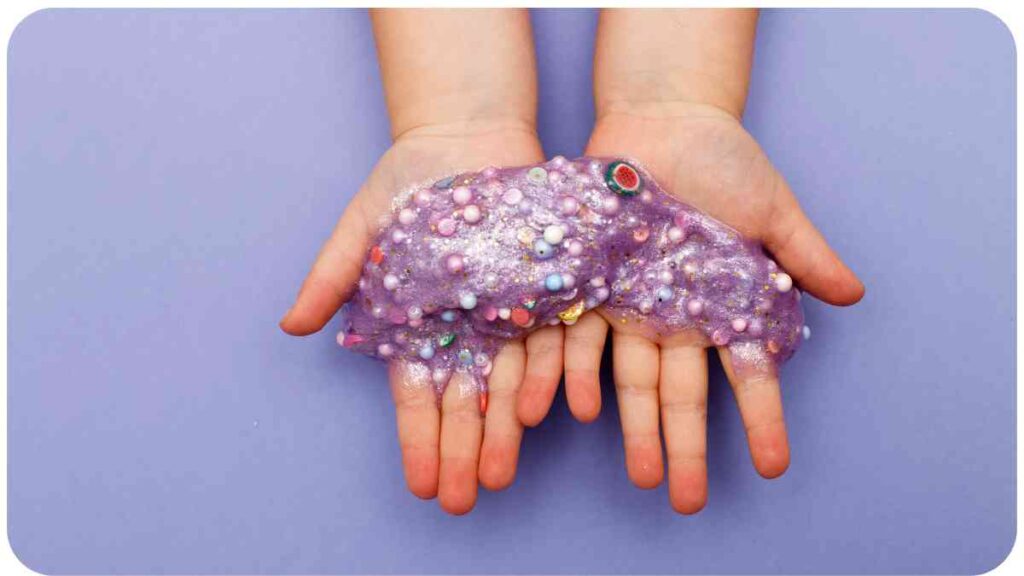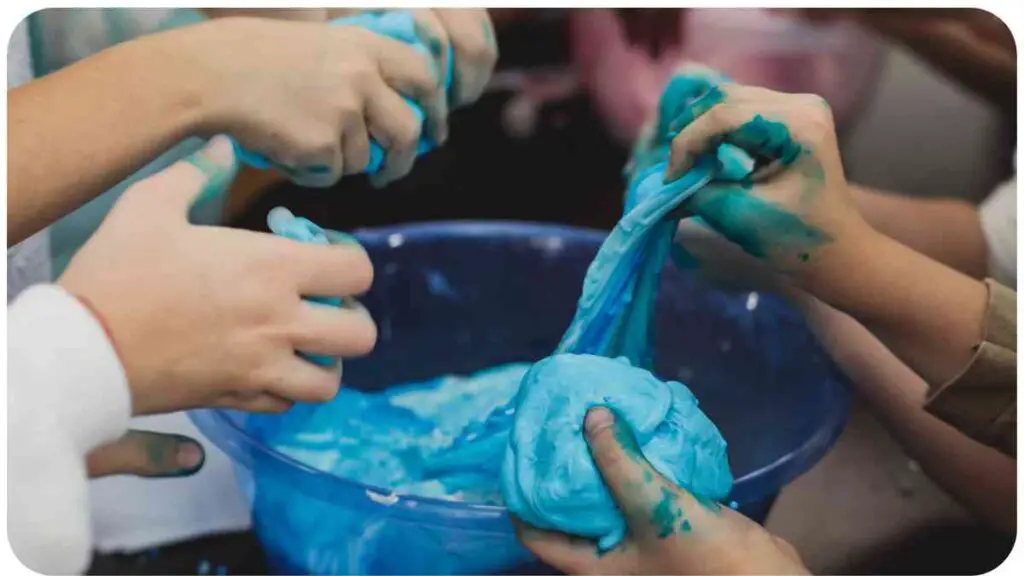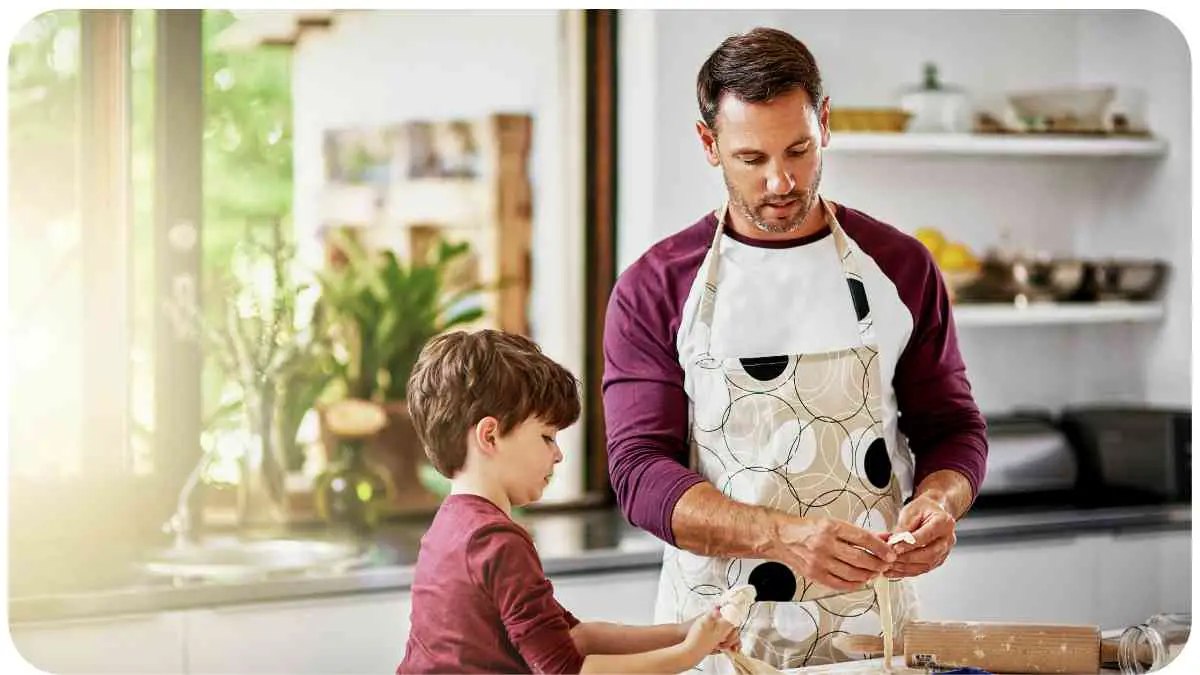Welcome to our comprehensive guide on the safety of slime making. Slime has gained immense popularity in recent years, especially among children and young adults. It’s crucial to prioritize safety when creating and handling slime to prevent potential risks and ensure a positive experience for everyone involved.
In this article, we will provide you with essential information about slime, its ingredients, potential dangers, and effective safety measures to follow. We’ll also share personal experiences and expert insights to help you navigate the world of slime with confidence. Let’s dive in!
| Key Takeaways |
|---|
| Safety should be a top priority when making slime. |
| Always supervise children when making and playing with slime. |
| Select safe ingredients and avoid toxic or allergenic substances. |
| Follow reliable slime recipes and avoid using small or hazardous add-ins with young children. |
| Properly store slime in airtight containers to maintain its freshness and prevent contamination. |
| Take precautions to prevent accidental ingestion or contact with eyes, mouth, and nose. |
| Clean and sanitize the workspace and tools before and after making slime. |
| Be prepared to handle accidents, spills, and skin irritations by following appropriate procedures. |
| Educate yourself and children about proper slime handling to ensure a safe and enjoyable experience. |
| When in doubt, consult healthcare professionals or experts for guidance and advice. |
2. What is Slime?
Slime is a gooey, malleable substance that provides sensory stimulation and entertainment. It comes in various forms, such as bouncy, stretchy, fluffy, or jiggly, offering a wide range of tactile experiences. Slime has become a popular DIY project and can be made using simple household ingredients. However, it’s important to understand the potential safety concerns associated with slime-making, as we’ll explore further in this article.
3. Ingredients for Making Slime

Before we delve into the safety precautions, let’s take a look at the common ingredients used in slime-making:
- Glue
- Borax or other slime activators
- Water
- Coloring agents (food coloring, pigments, glitter)
- Optional add-ins (foam beads, sequins, charms)
These ingredients come together to create the desired texture and consistency of slime. However, not all ingredients are safe or suitable for every individual. It’s important to exercise caution and select ingredients that are appropriate for your needs.
4. Dangers of Unsupervised Slime Making
Unsupervised slime making can pose several risks, especially when children are involved. Here are some potential dangers to consider:
– Toxic Ingredients
Certain slime recipes may call for ingredients that can be toxic if ingested or come into contact with the skin. Common slime activators like borax or contact lens solution contain chemicals that, if mishandled or used improperly, can cause harm. It is essential to be aware of safer alternatives, which we will discuss in detail later in this article.
– Allergic Reactions
Some individuals might be allergic to certain ingredients commonly found in slime, such as latex or specific fragrance agents. Allergies can range from mild to severe, so it’s crucial to review the ingredients and consult with an allergist if needed.
– Risk of Contamination
As slime is often handled and manipulated by hand, there is a risk of introducing bacteria or other contaminants into the mixture. This can lead to skin irritations, infections, or other health issues. Proper hygiene practices and safe ingredient selection can help mitigate these risks.
– Choking Hazards
Smaller children, especially those under the age of three, are particularly vulnerable to choking hazards. Slime should always be used and stored under adult supervision to prevent accidental ingestion or choking.
5. Safe Slime-Making Tips
To ensure the safety of everyone involved in slime making, consider the following tips:
- Always supervise children when making and playing with slime.
- Follow slime recipes from reliable sources that prioritize safety.
- Wear gloves and avoid direct skin contact with slime ingredients, especially if you have sensitive skin.
- Keep slime away from the mouth, eyes, and nose to avoid accidental ingestion or irritation.
- Dispose of slime properly to prevent it from ending up in drains or the environment.
- Clean and sanitize the workspace and tools before and after making slime.
6. Safe Ingredients for Slime

Choosing safe ingredients is crucial for maintaining a non-toxic slime-making experience. Consider the following table for a list of safe ingredient options:
| Ingredient | Safety Rating |
| White School Glue | High |
| Clear Glue | High |
| Liquid Starch | High |
| Baking Soda | High |
| Saline Solution | High |
| Guar Gum | Moderate |
| Cornstarch | Moderate |
| Shampoo | Moderate |
| Hand Soap | Moderate |
| Baby Oil | Moderate |
| Lotion | Moderate |
| Contact Lens Solution | Low |
Table 1: Safe Ingredient Options
Remember, it’s essential to read ingredient labels and avoid using ingredients with toxic properties or those that may cause allergic reactions.
7. Choosing the Right Environment
Creating slime in an appropriate environment is key to promoting safety. Consider these factors when selecting a location:
- Adequate ventilation to prevent exposure to fumes or odors.
- Clean and clutter-free surfaces to minimize the risk of contamination.
- A designated space away from food and beverages to avoid accidental ingestion or cross-contamination.
- Protection for surfaces that may be sensitive to certain slime ingredients.
By choosing the right environment, you can maximize safety and fully enjoy the slime-making process.
8. Safe Storage and Handling of Slime
Proper storage and handling are important not only for keeping slime fresh but also for preventing accidents. Refer to the table below for storage options and tips:
| Storage Option | Description |
| Airtight containers | Keeps slime from drying out or becoming contaminated. |
| Ziplock bags | Allows for easy storage, especially for small quantities. |
| Labeled jars | Helps identify the type and date of slime. |
| Lockable containers | Ideal for preventing access by young children or pets. |
Table 2: Storage Options for Slime
Properly stored and labeled slime will last longer and ensure that you can enjoy it for an extended period without compromising safety.
9. Precautions for Young Children
When it comes to young children, extra precautions must be taken to ensure their safety while engaging in slime activities. Here are some important considerations:
- Avoid using small or potentially hazardous add-ins like foam beads or sequins with young children to prevent choking hazards.
- Choose simple slime recipes with a limited number of ingredients to minimize the risk of skin irritation or allergic reactions.
- Keep a close eye on young children to ensure they don’t put slime in their mouths or rub it in their eyes.
- Teach young children about proper slime handling and encourage them to wash their hands before and after playing with slime.
By implementing these precautions, you can create a safe and enjoyable slime-making experience for young children.
10. Risk-Free Slime Recipes
If you’re concerned about potential hazards or searching for alternative slime recipes, try the following risk-free options:
| Recipe | Ingredients |
| Fluffy Slime | White school glue, shaving cream, |
| baking soda, contact lens solution | |
| Cornstarch | Cornstarch, water, food coloring (optional) |
| Slime Putty | Clear glue, liquid starch, water |
Table 3: Risk-Free Slime Recipes
These recipes use safe and commonly available ingredients, offering a worry-free slime-making experience.
11. Handling Accidents and Spills
Accidents and spills are bound to happen when working with slime. Here’s a quick guide on how to handle them:
- For spills on surfaces, remove as much slime as possible and clean the area with warm soapy water.
- If slime becomes stuck in hair, apply a small amount of oil or conditioner and gently comb through to remove it.
- In case of skin irritation or allergic reactions, discontinue use, wash the affected area thoroughly, and consult a healthcare professional if necessary.
Remember, accidents are part of the learning experience. Handling them calmly and effectively ensures a safe and positive outcome.
12. Common Concerns Addressed
To address some common concerns about slime-making, refer to the table below for informative answers:
| Concern | Answer |
| Can slime go bad or expire? | Slime can dry out or develop mold over time if not properly stored or handled. |
| My child accidentally ingested slime. What should I do? | Monitor your child for any adverse reactions. If symptoms occur, contact a healthcare professional. |
| Can slime stain clothing or surfaces? | Some dyes or pigments in slime may cause stains. Avoid contact with porous materials and use caution when playing with slime near carpets, furniture, or clothing. |
| Is it safe to make slime without borax? | Absolutely! There are many alternative slime recipes that don’t require borax. Refer to the risk-free recipes mentioned earlier. |
Table 4: Common Concerns about Slime Answered
Being aware of these concerns and their solutions will help ease any worries and enhance your slime-making experience.
13. Conclusion
In conclusion, slime-making can be a fun and engaging activity for people of all ages. However, it is crucial to prioritize safety throughout the entire process to prevent any potential risks or hazards.
By following the safe slime-making tips provided in this article, choosing the right ingredients, creating a suitable environment, and taking precautions with young children, you can ensure a safe and enjoyable slime-making experience.
Remember to always be mindful of the ingredients used, avoid toxic substances, and follow reliable recipes. Additionally, proper storage, handling, and disposal of slime can help maintain its freshness and prevent accidents.
Before embarking on your next slime-making adventure, refer to the tables provided, which contain valuable information, ingredient options, storage suggestions, risk-free recipes, and answers to common concerns.
Now that you are equipped with the knowledge and understanding of slime safety, have fun exploring the world of slime, unleashing your creativity, and enjoying the sensory experience it provides. Happy slime-making!
If you have any further questions or need more information, feel free to explore other resources or seek guidance from professionals in the field. Stay safe and have a great time with your slime creations!
Further Reading
Here are some additional resources for further reading on the topic of slime safety:
- Stanford Children’s Health: Slime Time – Is It Safe for Kids?: This comprehensive article explores the safety considerations when making slime and provides guidance for parents and caregivers.
- Cincinnati Children’s Blog: Homemade Slime – Experts Weigh in on Safety & Germs: Experts from Cincinnati Children’s Hospital Medical Center discuss the safety aspects of homemade slime and provide insights on germ prevention.
- STEAM Powered Family: Slime Safety Tips: This blog post offers advice on slime safety, including ingredient selection, handling, and storage, while also addressing common concerns.
FAQs
Here are some frequently asked questions about slime safety:
Can slime be harmful to my health?
Slime made with safe ingredients and handled properly is generally not harmful. However, it is important to be aware of potential allergens or toxic ingredients, and always follow safety guidelines.
What are some safe alternatives to borax for slime making?
Safe alternatives to borax for slime making include contact lens solution, liquid starch, and certain types of glue that contain slime activators.
Can slime cause skin irritation?
Some individuals may experience skin irritation or allergic reactions due to certain ingredients in slime. It’s important to read ingredient labels, choose mild options, and discontinue use if irritation occurs.
How do I store slime to keep it from drying out?
To prevent slime from drying out, store it in airtight containers or sealable bags. This helps maintain its texture and prevents it from being exposed to air.
What should I do if my child accidentally ingests slime?
If your child accidentally ingests slime, monitor them closely for any adverse reactions. If symptoms occur or you are concerned, contact a healthcare professional or poison control for guidance.
Remember, these FAQs provide general information. For specific concerns or individualized advice, consult with healthcare professionals or experts in the field.

Meet Hellen James, the multi-talented writer and nurturing mother who takes young readers on a thrilling journey through her sensory-infused blog. Drawing inspiration from her own experiences as a parent.

